Ever driven on a curve that felt oddly smooth, like your car naturally followed the bend? That magic is often due to superelevation — a sloped road surface designed to balance forces as vehicles take a curve. It’s not just about comfort; it’s about safety and precision in road engineering.
Basics of Road Geometry
Before diving into calculations, let’s understand road geometry. Roads aren’t just straight lines — curves are crucial, especially in hilly or urban terrain. These curves come in different shapes, but circular curves are common in design due to their predictability.
Horizontal alignment refers to the plan-view path of a road. Superelevation plays a major role here, helping vehicles maintain stability while navigating these curves.
Superelevation Explained
Superelevation is the tilting of the road surface at a curve, raising the outer edge compared to the inner one. This helps counteract the centrifugal force acting on vehicles, keeping them from skidding or overturning.
It’s used:
On highways and expressways
In sharp curves
Where vehicle speeds are high
Factors Affecting Superelevation Design
Designing superelevation isn’t a one-size-fits-all deal. Several factors come into play:
Design Speed (V): Higher speeds mean more tilt is needed.
Radius of Curve (R): Sharper curves (smaller R) need greater superelevation.
Friction Coefficient (f): The grip between tires and the road surface.
Climate & Terrain: Icy roads or hilly areas may require conservative values.
Superelevation Formula
The general formula to calculate superelevation is:
e + f = V² / (gR)
Where:
e = superelevation (in decimal)
f = lateral friction factor
V = speed of the vehicle (m/s)
g = acceleration due to gravity (9.81 m/s²)
R = radius of the curve (m)
If velocity is in KMPH then e + f = V2/ 127R or cgange the velocity to m/s
Let’s simplify that.
Superelevation Equation Breakdown
To understand better:
e = the slope (rise/run) of the road
V = design speed (converted to m/s)
g = 9.81 m/s² (gravitational constant)
R = radius of the horizontal curve
f = side friction factor (usually ranges from 0.10 to 0.15)
You can rearrange the equation to find e if other values are known.
Step-by-Step Calculation Guide
Step 1: Gather Input Data
Design speed (V) = 90 km/h = 25 m/s
Radius (R) = 250 m
f = 0.15
Step 2: Apply Formula
Use:
e + f = V² / (gR)
→ e + 0.15 = (25²) / (9.81 × 250)
Step 3: Solve It
e + 0.15 = 625 / 2452.5
e + 0.15 = 0.2548
e = 0.2548 – 0.15 = 0.1048 (or 10.48%)
Step 4: Check Limits
If the maximum superelevation allowed is 7%, this needs adjustment — either by:
Reducing design speed
Increasing radius
Accepting a higher friction value (if safe)
Design Standards and Limits
Different regions follow different guidelines:
IRC (India): Max e = 7% in plain terrain
AASHTO (USA): Max e = 10%
Minimum e may be zero in urban low-speed areas
Engineers need to stick to these while optimizing the design.
Superelevation Runoff
This is the length of road needed to transition from normal camber (flat) to full superelevation. Runoff depends on:
Road type
Speed
Curve sharpness
Proper runoff ensures driver comfort and avoids sudden jolts or wheelspin.
Real-Life Example
Problem:
Design superelevation for a curve with:
Radius = 300 m
Speed = 80 km/h
Friction = 0.14
Solution:
Speed in m/s = 80 × 1000 / 3600 = 22.22 m/s
e + 0.14 = (22.22²) / (9.81 × 300)
e + 0.14 = 0.168
e = 0.028 or 2.8%
2.8%< 7%, hence safe.
✅ Within limits – good design!
Superelevation vs Banking
People often use these interchangeably. They’re similar, but:
Superelevation is engineered into roads
Banking often refers to curves in racing tracks or natural slopes
In essence, superelevation is calculated and controlled.
Practical Considerations
Urban roads often avoid full superelevation due to pedestrians and drainage.
Rural highways utilize full design values for safety at higher speeds.
Rain and snow reduce friction, so lower superelevation may be chosen with broader curves.
Tools Used for Superelevation Design
Modern design uses both manual and digital tools:
AutoCAD Civil 3D
MX Road
IRC/AASHTO design manuals
Total stations and survey tools
These help ensure accuracy and compliance with standards.
Common Mistakes to Avoid
Overestimating speed without real traffic data
Choosing unrealistic friction values
Ignoring transition length/runoff
Not checking against regional codes
Benefits of Proper Superelevation
Improved vehicle handling
Reduced skidding and overturning risk
Enhanced ride comfort
Better longevity for road surface
Click Here To See How To Derive Formula For Super-Elevation Of Bending Road
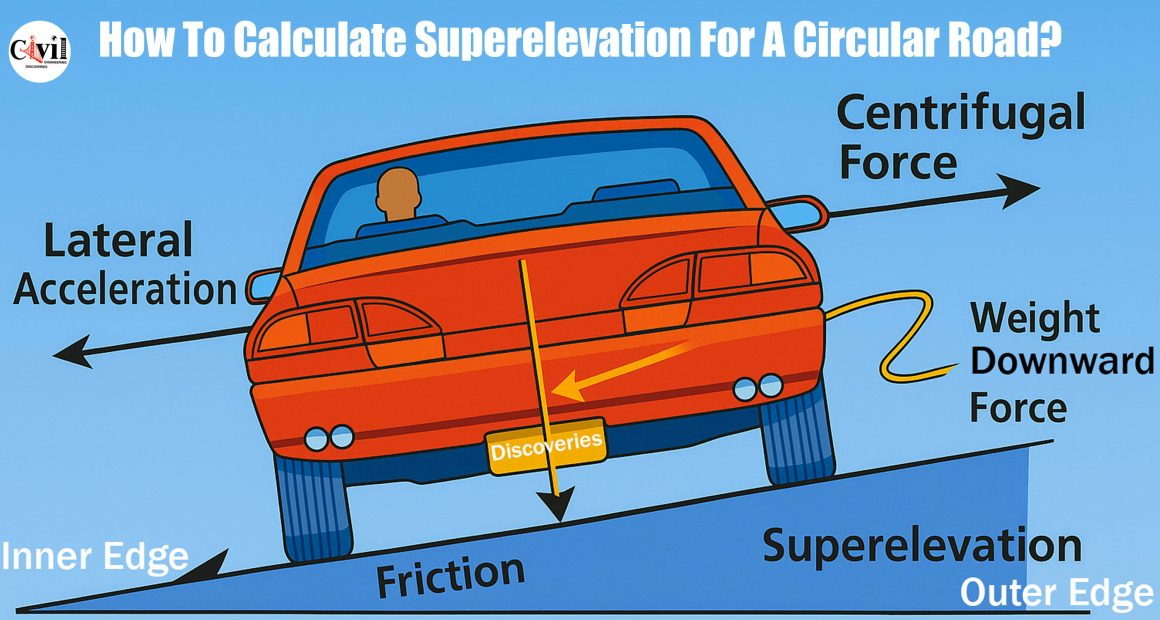

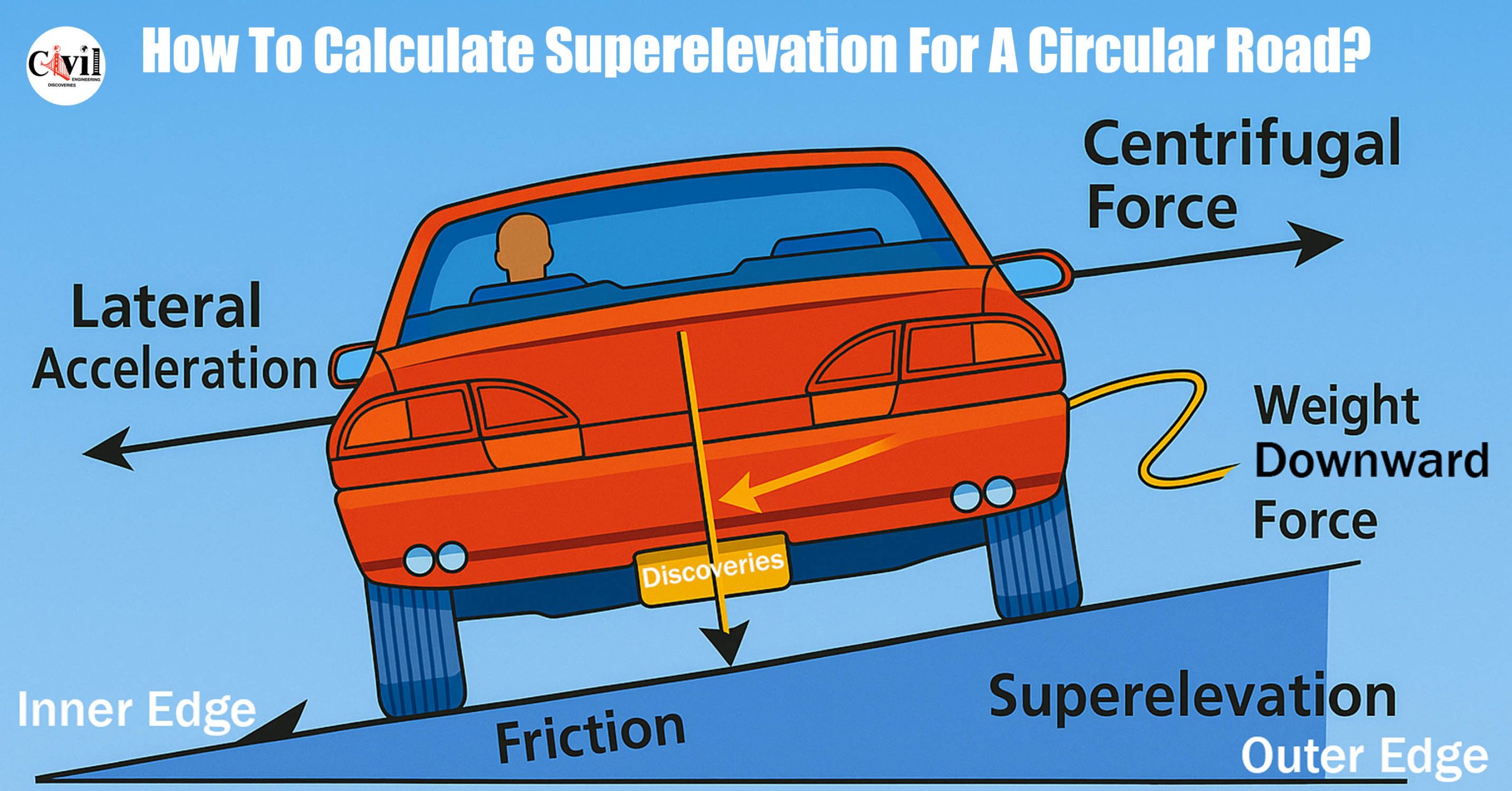


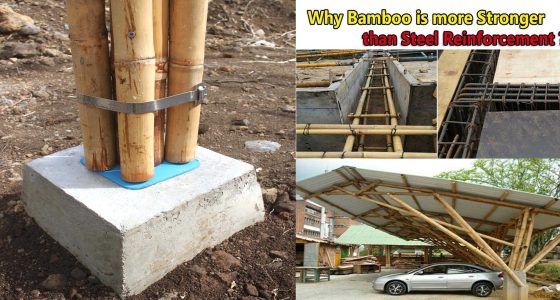
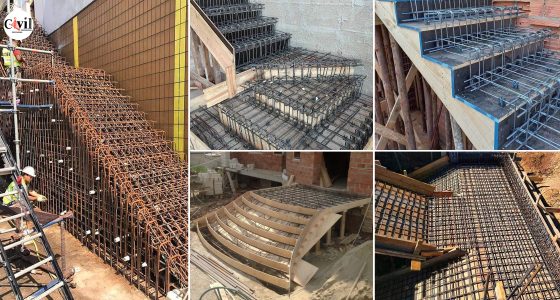
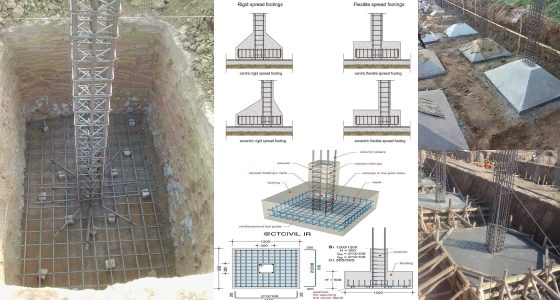
Engineers are in the right place here.. this is so impressive.